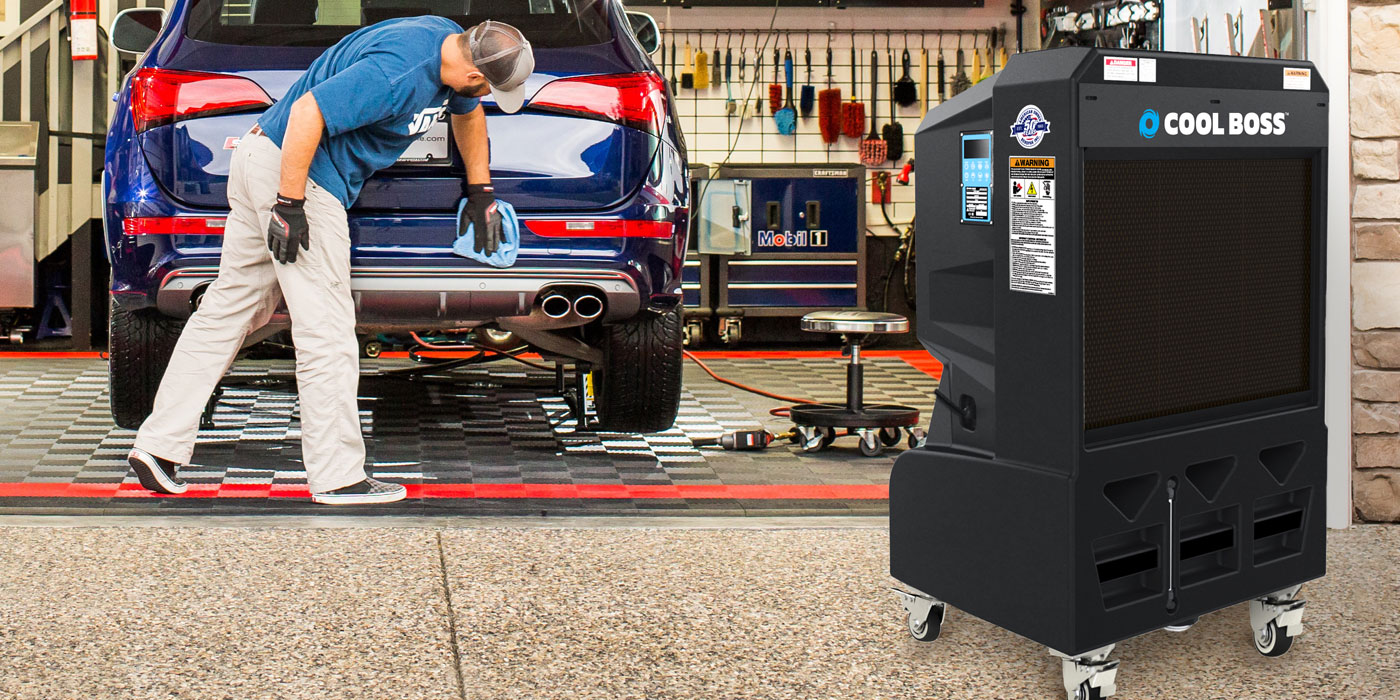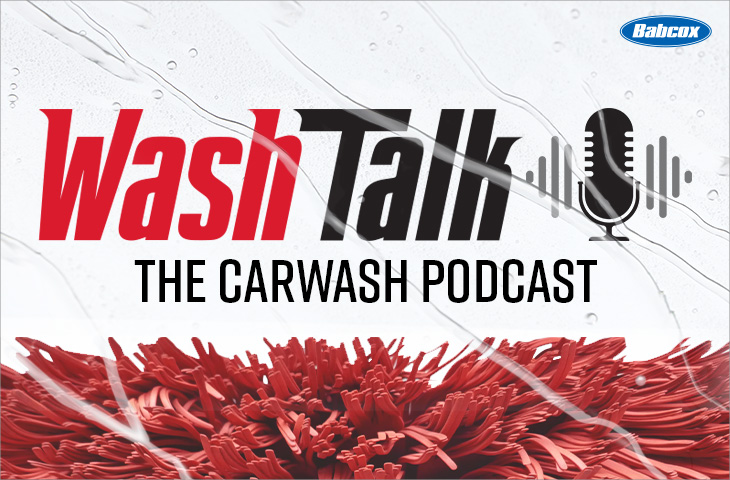Whether your carwash is new or existing, having the necessary equipment is vital to keeping your enterprise operating smoothly. Replacing, upgrading or purchasing equipment can put a serious pinch on your cash flow, but with the right equipment financing, you can get the machinery your business needs without making a substantial dent in the bottom line.
Equipment financing can take several different forms, and what’s appropriate for one business may not be for another. In this article, we will review some of the financing options available for carwash operators.
Why finance when I can pay cash?
The question of paying cash or financing is fairly easy to answer. It comes down to the useful life. If the useful life of the equipment is greater than one year, financing is most likely the answer. The reasoning for this is simple: It’s about the cash flow. That is, you maximize cash flow by paying for long-term services over time versus paying in advance.
The critical factor is recognizing that your carwash equipment is more than just a machine — it’s a service provider. It provides the service of cleaning the car just like an employee. So, obviously, you would not pay an employee today for washing cars five years from now. The same concept applies to long-term equipment. Simply pay for equipment as it makes you money over time — not before.
Equipment loans
Just about everyone is familiar with the concept of a standard bank loan. Equipment loans are designed specifically for the purchase of business equipment. Your business makes payments of principal and interest over time. Once the debt is repaid, you own the equipment free and clear.
The advantage to a conventional bank equipment loan is generally rate. The rate on a bank loan can be slightly lower than other types of financing. However, equipment loans can have some drawbacks. Depending on how the loan agreement is structured, the lender may require a down payment (typically 20 to 30-plus percent), impose a blanket lien on your business assets or require additional collateral, such as real estate.
Additionally, getting a conventional equipment loan from a bank can be challenging. Most banks require personal and business tax returns, a personal financial statement, interim financial statements and other items. Strong personal credit and business cash flow are needed for conventional loans.
Lenders usually require you to be in business for at least three years before applying. You may have a tough time qualifying if you’re still in the startup phase. Also, it can normally take a week or longer to get a decision from a bank. So, a conventional bank loan can be a viable option if down payment, full financial disclosure, additional collateral or time are not critical factors.
Equipment leases
When you need equipment, you don’t necessarily have to pay cash or get a loan to buy it; you can lease it instead. This means you’re essentially paying rent each month just as you would if you were leasing office space. However, unlike leasing an office, with most equipment leases, at the end of the lease term, you can choose to renew your agreement or buy the equipment outright. It is common for carwash equipment leases to have a $1 or 10 percent purchase option.
Leasing offers an advantage over loans in that you’re not required to come up with a large down payment to obtain the equipment the way you might be expected to with a loan. The typical down is one or two payments. It’s also easier to qualify for a lease than a standard bank loan. It’s common to get approved for equipment leases in less than 24 hours with just a single-page application and some bank statements.
With most types of equipment leases, the equipment serves as collateral. So, in the event that you default, the lender can take possession of the leased equipment.
There is a potential drawback, however, in terms of early payoff with leasing. Since leases are agreements to pay a fixed payment for a specific term, early payoffs are typically the sum of the remaining payments.
Equipment finance agreements
Equipment finance agreements (EFAs) are similar to equipment leases. They are contracts to pay a fixed monthly payment for a specified term. The biggest difference between an EFA and a lease is the purchase option at the end. In most cases, the equipment is yours at the end of the term with an EFA.
One other advantage to EFAs over leases is sales tax treatment. In places like Ohio, Nevada and New York, as examples, the state requires tax to be charged on the gross receivable for leases. Therefore, if you lease equipment in a place like New York, you are actually paying tax on interest. Consider the following example:
- Equipment cost = $100,000
- Tax = 8.875 percent
- Payment = $2,000
- Term = 60 months.
The standard tax on a $100,000 equipment purchase would be $8,875 (8.875 percent). If you lease the equipment in New York, the sales tax would be based on the total of the payments, or $120,000 (60 months × $2,000 per month) — not the purchase price of $100,000. Therefore, you would pay almost $2,000 more in taxes if you lease the equipment ($10,650 in tax on a lease versus $8,750 on an EFA). So, if you’re in Ohio, New York, Nevada or any other state that taxes gross lease receivables, you may want to consider an EFA over a lease.
Small Business Administration loans
The Small Business Administration (SBA) offers several loan programs geared towards small business owners that can be used for equipment purchases. These programs are available to for-profit, owner-operated businesses. Loan amounts can go up to $5,000,000 or more.
Many people think the U.S. government makes SBA loans, but it is not true. SBA loans are just backed by a government guaranty. This guaranty gives lenders the confidence to write loans — so much so, in fact, that borrowers can even finance things like installation, site work, working capital, inventory, permits and other soft costs. So, if you need to fix your parking lot, expand your tunnel and re-equip your wash, the SBA may be a good option.
SBA loans are a great way to finance equipment if you want a low payment. You can finance equipment and improvements over 10 years or more with an SBA loan. In addition, unlike the other types of equipment financing, new operators don’t pay a significant premium in rate for an SBA loan. The current maximum rate of charge for an SBA 7(a) loan is Prime Rate plus 2.75 percent, which equates to 7.25 percent. In addition, SBA 7(a) loans with terms of less than 15 years have no prepayment penalty.
The two drawbacks to SBA loans are cost and timing. Business owners will pay a guaranty fee of approximately 2.5-plus percent of the loan amount. The fee can be included in the loan proceeds. In terms of the percentage, however, that can be on par with what banks charge for equipment loans when you consider the annual renewal costs associated with many types of bank loans.
Of all the options, the SBA loan has the longest time horizon for funding. It can take four to eight weeks or longer for a business to complete the various stages of the application and approval process and receive the loan proceeds. That’s a significant disadvantage if you need to purchase equipment in a hurry.
However, if you have the time, SBA loans can be a great option. Having the longer term can be a huge difference in cash flow. For equipment sellers, having the option to offer the lower payment associated with SBA loans can be the difference in making the sale or not. In addition, the reduced payment could make the difference in a low volume site making a profit or not.
Again, SBA’s longer terms (10 to 25 years) create the opportunity to minimize payments and maximize cash flow.
For example, the typical payment on a $500,000, five-year equipment lease will be in the range of $10,000 to $10,500. That same amount financed with a 10-year SBA loan will reduce the payment to approximately $5,250 to $5,800. Those savings can equate to a $60,000 increase in annual cash flow.
Equipment and tax savings
One of the advantages of buying new equipment is the related tax deduction. The IRS allows you to deduct up to 100 percent of the amount you invest in equipment purchased up to $1,000,000 in the first year.
Related: Wash Wisdom: Tax season tips for small businesses
Here are some details:
2018 deduction limit = $1,000,000
This deduction is good on new and used equipment as well as off-the-shelf software. To take the deduction for tax year 2018, the equipment must be financed/purchased and put into service between Jan. 1, 2018 and the end of the day on Dec. 31, 2018.
2018 spending cap on equipment purchases = $2,500,000
This is the maximum amount that can be spent on equipment before the Section 179 deduction available to your company begins to be reduced on a dollar-for-dollar basis. This spending cap makes Section 179 a true “small business tax incentive,” because larger businesses that spend more than $2.5 million on equipment won’t get the deduction.
Bonus depreciation: 40 percent for 2018
Bonus depreciation is generally taken after the $1,000,000 Section 179 spending cap is reached. Please note: Bonus depreciation is available for new equipment only; used equipment qualifies for Section 179 deduction but does not qualify for bonus depreciation.
Bonus financing deduction for 2018
In addition to the Section 179 tax deduction, business owners may be able to deduct up to 100 percent of all related financing or equipment lease costs in excess of the base equipment purchase deduction.
Which option is right for you?
When it comes to deciding between a bank loan, lease, EFA or SBA loan, focus on the factors that are critical to you and your business. If you need equipment quickly and don’t want to deal with a bunch of paperwork, consider a lease or an EFA.
If, on the other hand, you have time and/or the size of the transaction is large, a bank loan or SBA loan will likely be your best bet. In any case, financing equipment gives your business another asset and establishes business credit, which can be super helpful if you ever consider getting another loan down the road.
Michael Ford is the managing director at Coast Commercial Credit, which specializes in small business and carwash financing. You can contact him at [email protected] or (800) 400-0365. To learn more about the company, you can visit www.CoastCC.com.














